On this page
Books about birds in the urban environmentThe books are listed by publication date with the most recent at the top of the page.
|
|
|
|
The Peregrine Returns: The Art and Architecture of an Urban Raptor RecoveryMary Hennen
Illustrations: Peggy MacNamara
University Of Chicago Press
2017
"In The Peregrine Returns, Mary Hennen gives wings to this extraordinary conservation success story. Drawing on the beautiful watercolours of Field Museum artist-in-residence Peggy Macnamara and photos by Field Museum research assistant Stephanie Ware, as well as her own decades of work with peregrines, Hennen uses a program in Chicago as a case study for the peregrines' journey from their devastating decline to the discovery of its cause (a thinning of eggshells caused by a by-product of DDT), through to recovery, revealing how the urban landscape has played an essential role in enabling falcons to return to the wild – and how people are now learning to live in close proximity to these captivating raptors. Both a model for conservation programs across the country and an eye-opening look at the many creatures with which we share our homes, this richly illustrated story is an inspiring example of how urban architecture can serve not only our cities' human inhabitants, but also their wild ones."
|
Buy from amazon.co.uk 
|
|
Ecology and Conservation of Birds in Urban EnvironmentsEditor: Enrique Murgui, Marcus Hedblom
Springer-Verlag
2016
"This book provides syntheses of ecological theories and overarching patterns of urban bird ecology that have only recently become available. The numerous habitats represented in this book ranges from rows of trees in wooded alleys, to wastelands and remnants of natural habitats encapsulated in the urban matrix. Authored by leading scientists in this emergent field, the chapters explore how the characteristics of the habitat in urban environments influence bird communities and populations at multiple levels of ecological organization and at different spatial and temporal scales, and how this information should be incorporated in urban planning to achieve an effective conservation of bird fauna in urban environments."
|
Buy from amazon.co.uk 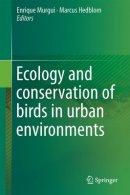
|
|
Falcons in the City: The Story of a Peregrine FamilyChris G. Earley
Illustration: Luke Massey
Firefly Books
2016
"A charming story about a nest of wild birds that alarm, then charm, their city landlords. What happens when a peregrine falcon chooses to lay its eggs on a balcony high atop a tower block? Here is the story of a family of wild birds that moves into a cramped urban home and decides to settle in among towers filled with people and noise. The birds' new human neighbours are quick to try and evict, but it turns out that the falcons have rights too and the law is on their side. This amusing true-life story looks at the issues related to urban wildlife and how urban dwellers co-exist with an ever-increasing wildlife population that finds ingenious - and sometimes devious - ways to move into our homes and cities, often without notice. Illustrated with photographs documenting the early life of a peregrine falcon family that grows from eggs to full-fledged birds in the flowerbox of a curious apartment-dweller, this book also explores the natural history of this majestic bird species."
|
Buy from amazon.co.uk 
|
|
Birdwatching in New York City and on Long IslandDeborah Rivel and Kellye Rosenheim
University Press of New England
2016
"This easy-to-use guide gives seasonal information for both popular birding sites and those off the beaten path. Precise directions to the best viewing locations within the region's diverse habitats enable birdwatchers to efficiently explore urban and wild birding hotspots. Over 400 species of birds can be seen in New York City's five boroughs and on Long Island, one of the most densely populated and urbanized regions in North America, which also happens to be situated directly on the Atlantic Flyway. .... Including the latest information on the seasonal status and distribution of more than 400 species, with 39 maps and over 50 photographs, this full-color guide features information essential to planning a birding visit. It will become the go-to book for both the region's longtime birders and those exploring the area for the first time."
|
Buy from amazon.co.uk 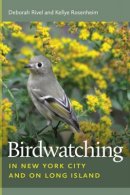
|
|
Tales from Concrete Jungles: Urban Birding Around the WorldDavid Lindo
Bloomsbury Publishing
2015
"Since 2006, a long-running series of articles has appeared in Birdwatching magazine, showcasing David visiting a wide variety of cities in Britain and Europe and the birds he has encountered on these short city breaks. These articles are collected here for the first time; most of them are expanded with new material, but a few never before published are also featured. They cover visits to many cities throughout the world and these cities are surprisingly different, with striking variations even between cities in Britain. Each urban centre has its own personality and this is reflected in the people that David meets and the birds that he sees."
|
Buy from amazon.co.uk 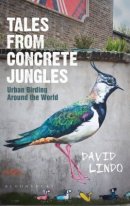
|
|
City Creatures: Animal Encounters in the Chicago WildernessGavin Van Horn
University of Chicago Press
2015
"City Creatures introduces readers to an astonishing diversity of urban wildlife with a unique and accessible mix of essays, poetry, paintings, and photographs. The contributors bring a story-based approach to this urban safari, taking readers on birding expeditions to the Magic Hedge at Montrose Harbor on the North Side, canoe trips down the South Fork of the Chicago River (better known as Bubbly Creek), and insect-collecting forays or restoration work days in the suburban forest preserves. The book is organized into six sections, each highlighting one type of place in which people might encounter animals in the city and suburbs."
|
Buy from amazon.co.uk 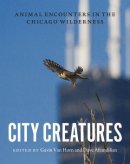
|
|
Nature in Towns and CitiesDavid Goode
New Naturalist 127
Collins
2014
"Not since Richard Fitter’s landmark publication in 1945, ‘London’s Natural History’ – volume 3 in the New Naturalist series – has there been a comprehensive guide to urban natural history. Since then there have been major advances in the conservation of nature in our towns and cities, and there is even more to say about how animals and plants have adapted, in varying degrees, to urbanisation. But this is not merely an exploration of natural history within the urban environment – David Goode uses his knowledge of urban ecology to describe the range of habitats and species which exist within urban areas, and shows how our understanding is being applied to encourage a greater variety of nature into towns and cities. He illustrates how an ecological approach can be incorporated within planning and design to create a range of habitats from tiny oases to extensive new urban woodland and wetlands."
|
Buy from amazon.co.uk 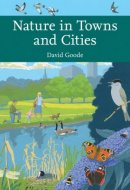
|
|
Welcome to Subirdia: Sharing Our Neighborhoods with Wrens, Robins, Woodpeckers, and Other WildlifeJohn M. Marzluff
Yale University Press
2014
"Welcome to Subirdia presents a surprising discovery: the suburbs of many large cities support incredible biological diversity. Populations and communities of a great variety of birds, as well as other creatures, are adapting to the conditions of our increasingly developed world. In this fascinating and optimistic book, John Marzluff reveals how our own actions affect the birds and animals that live in our cities and towns, and he provides ten specific strategies everyone can use to make human environments friendlier for our natural neighbors. Over many years of research and fieldwork, Marzluff and student assistants have closely followed the lives of thousands of tagged birds seeking food, mates, and shelter in cities and surrounding areas. From tiny Pacific wrens to grand pileated woodpeckers, diverse species now compatibly share human surroundings. By practicing careful stewardship with the biological riches in our cities and towns, Marzluff explains, we can foster a new relationship between humans and other living creatures-one that honors and enhances our mutual destiny."
|
Buy from amazon.co.uk 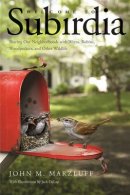
|
|
Avian Urban Ecology: Behavioural and Physiological AdaptationsEditor: Diego Gil and Henrik Brumm
Oxford University Press
2013
"As natural habitat continues to be lost and the world steadily becomes more urbanized, biologists are increasingly studying the effect this has on wildlife. Birds are particularly good model systems since their life history, behaviour, and physiology are especially influenced by directly measurable environmental factors such as light and sound pollution. It is therefore relatively easy to compare urban individuals and populations with their rural counterparts. This accessible text focuses on the behavioural and physiological mechanisms which facilitate adaptation and on the evolutionary process that ensues. It discusses topics such as acoustics, reproductive cues, disease, and artificial feeding, and includes a series of case studies illustrating cutting edge research on these areas. Avian Urban Ecology is suitable for professional avian biologists and ornithologists as well as graduate students of avian ecology, evolution, and conservation. It will also be of relevance and use to a more general audience of urban ecologists and conservation biologists."
|
Buy from amazon.co.uk 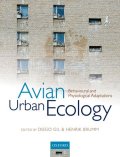
|
|
Designing for Biodiversity: A Technical Guide for New and Existing BuildingsDr Carol Williams. Kelly Gunnell and Brian Murphy
RIBA
2nd edition
2013
"The built environment has the potential to have a major impact on biodiversity, not least with the increasingly demanding requirements to design more energy efficient and airtight buildings, leaving less space for species to inhabit. The construction industry has an important role to play in ensuring that buildings are designed and refurbished in a way in which biodiversity can be enhanced. Through written guidance and architectural drawings, this book advises on how to incorporate provision for biodiversity within developments. With sections on different building-reliant species, general principles for design, ready-made products that be incorporated into designs, and legislation, policy and regulations, Designing for Biodiversity is an invaluable resource for all architects, ecologists and anyone involved in designing or briefing for biodiversity in buildings."
|
Buy from amazon.co.uk 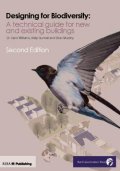
|
|
The Global PigeonColin Jerolmack
University of Chicago Press
2013
"The pigeon is the quintessential city bird. Domesticated thousands of years ago as a messenger and a source of food, its presence on our sidewalks is so common that people consider the bird a nuisance - if they notice it at all. Yet pigeons are also kept by people all over the world for pleasure, sport, and profit, from the "pigeon wars" waged by breeding enthusiasts in the skies over Brooklyn to the Million Dollar Pigeon Race held every year in South Africa. Drawing on more than three years of fieldwork across three continents, Colin Jerolmack traces our complex and often contradictory relationship with these versatile animals in public spaces such as Venice's Piazza San Marco and London's Trafalgar Square and in working-class and immigrant communities of pigeon breeders in New York and Berlin. By exploring what he calls "the social experience of animals," Jerolmack shows how our interactions with pigeons offer surprising insights into city life, community, culture, and politics."
|
Buy from amazon.co.uk 
|
|
Urban Ecosystems: Ecological Principles for the Built EnvironmentFrederick R. Adler and Colby J. Tanner
Cambridge University Press
2013
"As humans have come to dominate the earth, the ideal of studying and teaching ecology in pristine ecosystems has become impossible to achieve. Our planet is now a mosaic of ecosystems ranging from the relatively undisturbed to the completely built, with the majority of people living in urban environments. This accessible introduction to the principles of urban ecology provides students with the tools they need to understand these increasingly important urban ecosystems. It builds upon the themes of habitat modification and resource use to demonstrate how multiple ecological processes interact in cities and how human activity initiates chains of unpredictable unintended ecological consequences. Broad principles are supported throughout by detailed examples from around the world and a comprehensive list of readings from the primary literature."
|
Buy from amazon.co.uk 
|
|
Urban Bird Ecology and ConservationEditors: Christopher A. Lepczyk and Paige S. Warren
Studies In Avian Biology 45
Cooper Ornithological Society
2012
"Now that more than half of the world's population lives in cities, the study of birds in urban ecosystems has emerged at the forefront of ornithological research. An international team of leading researchers in urban bird ecology and conservation from across Europe and North America presents the state of this diverse field, addressing classic questions while proposing new directions for further study. Areas of particular focus include the processes underlying patterns of species shifts along urban-rural gradients, the demography of urban birds and the role of citizen science, and human-avian interaction in urban areas. This important reference fills a crucial need for scientists, planners, and managers of urban spaces and all those interested in the study and conservation of birds in the world's expanding metropolises."
|
Buy from amazon.co.uk 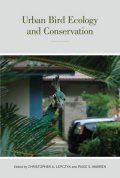
|
|
Behavioural Responses to a Changing World: Mechanisms and ConsequencesEditor: Ulrika Candolin, Bob B.M. Wong
Oxford University Press
2012
"Human-induced environmental change currently represents the single greatest threat to global biodiversity. Species are typically adapted to the local environmental conditions in which they have evolved. Changes in environmental conditions initially influence behaviour, which in turn affects species interactions, population dynamics, evolutionary processes and, ultimately, biodiversity. How animals respond to changed conditions, and how this influences population viability, is an area of growing research interest. Yet, despite the vital links between environmental change, behaviour, and population dynamics, surprisingly little has been done to bridge these areas of research. Behavioural Responses to a Changing World is the first book of its kind devoted to understanding behavioural responses to environmental change. The volume is comprehensive in scope, discussing impacts on both the mechanisms underlying behavioural processes, as well as the longer-term ecological and evolutionary consequences. Drawing on international experts from across the globe, the book covers topics as diverse as endocrine disruption, learning, reproduction, migration, species interactions, and evolutionary rescue."
|
Buy from amazon.co.uk 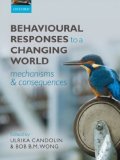
|
|
Nature All Around Us: A Guide to Urban EcologyEditors: Beatrix Beisner, Christian Messier, Luc-Alain Giraldeau
University of Chicago Press
2012
"Nature All Around Us uses the familiar - such as summer Sundays humming with lawn mowers, gray squirrels foraging in planters, and flocks of pigeons - in order to introduce basic ecological concepts. In twenty-five short chapters organized by scale, from the home to the neighborhood to the city at large, it offers a subtle and entertaining education in ecology sure to inspire appreciation and ultimately stewardship of the environment. Various ecological concepts that any urban dweller might encounter are approachably examined, from understanding why a squirrel might act aggressively towards its neighbor to how nutrients and energy contained within a discarded apple core are recycled back into the food chain. Streaming through the work is an introduction to basic ecology, including the dangers of invasive species and the crucial role played by plants and trees in maintaining air quality. Taken as a whole, Nature All Around Us is an unprecedented field guide to the ecology of the urban environment that invites us to look at our towns, cities, and even our backyards through the perspective of an ecologist."
|
Buy from amazon.co.uk 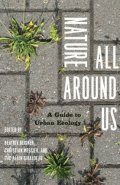
|
|
Hornbills in the City: A Conservation Approach to Hornbill Study in SingaporeMarc Cremades and Soon Chye Ng
National Parks Board Singapore
2012
"This is an amazing visual account of the status of the Oriental Pied Hornbill in Singapore as well as related species, and of the tireless efforts by the authors and the National Parks Board to raise the level of knowledge and awareness about these important birds; the book is expertly put together by editorial consultant Ng Bee Choo. Six years of work went into the making of this large format book which includes more than 600 photographs, over 100 maps and illustrations and a 40-minute DVD movie."
|
 |
|
Spatial Distribution And Habitat Preferences Of The House Sparrow, Passer domesticus In Urbanised LandscapesLorna M. Shaw, Dan Chamberlain, Greg Conway & Mike Toms
BTO Research Report 599
British Trust for Ornithology
2011
"The House Sparrow Passer domesticus has declined in urban areas across Europe since the late 1970s and is now listed as a species of conservation concern. Recent research into the causes of decline suggests that breeding populations may be influenced by a number of urban habitat features. These include pollution levels, insect abundance, nest site availability and the presence of predators. Here we examine how the presence of certain features within the urban environment relates to the location of House Sparrow colonies. We do this by comparing the distance between actual nest sites and features of interest, with that between the same features and a series of randomly-generated points. We also test the preferences of House Sparrows for a number of habitat types by using compositional habitat analysis. We found that houses with gardens were strongly preferred to any other habitat type. Interestingly, in more rural areas, allotments and greenspace were found to provide useful alternatives to houses with gardens. Predators and roads were not avoided, something that may be a result of their ubiquitous nature rather than any lack of detrimental impact. Mitigation measures to prevent the loss of House Sparrow breeding colonies should, therefore, concentrate on the maintenance and enhancement of quality urban gardens and the resources they contain. This may be of particular importance in the most densely populated urban areas."
|
Buy from amazon.co.uk 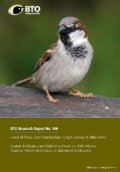
|
|
Urban Ecology: Patterns, Processes, and ApplicationsEditor: Jari Niemelä, Jürgen H. Breuste, Glenn Guntenspergen, Nancy E. McIntyre, Thomas Elmqvist, and Philip James
Oxford University Press
2011
"Urban Ecology brings together an international team of leading scientists to discuss our current understanding of all aspects of urban environments, from the biology of the organisms that inhabit them to the diversity of ecosystem services and human social issues encountered within urban landscapes. The book is divided into five sections with the first describing the physical urban environment. Subsequent sections examine ecological patterns and processes within the urban setting, followed by the integration of ecology with social issues. The book concludes with a discussion of the applications of urban ecology to land-use planning. The emphasis throughout is on what we actually know (as well as what we should know) about the complexities of social-ecological systems in urban areas, in order to develop urban ecology as a rigorous scientific discipline."
|
Buy from amazon.co.uk 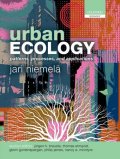
|
|
Applied Urban Ecology: A Global FrameworkEditor: Matthias Richter and Ulrike Weiland
Wiley-Blackwell
2011
"Explores ways in which the environmental quality of urban areas can be improved starting with existing environmental conditions and their dynamics. Written by an internationally renowned selection of scientists and practitioners, the book covers a broad range of established and novel approaches to applied urban ecology. Approaches chosen for the book are placed in the context of issues such as climate change, green– and open–space development, flood–risk assessment, threats to urban biodiversity, and increasing environmental pollution (especially in the "megacities" of newly industrialized countries). All topics covered were chosen because they are socially and socio–politically relevant today. Further topics covered include sustainable energy and budget management, urban water resource management, urban land management, and urban landscape planning and design. Throughout the book, concepts and methods are illustrated using case studies from around the world. A closing synopsis draws conclusions on how the findings of urban ecological research can be used in strategic urban management in the future."
|
Buy from amazon.co.uk 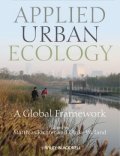
|
|
Wild City: On The Trail Of Britain's Urban WildlifeMartin Wainwright
Aurum Press
2011
"Ever since people began building towns and cities, they have had to share their habitats with another group of urbanites - those from the natural world. Nature has often thrived on the fringes of human settlements, but now more and more of Britain's wildlife is heading for the bright lights of the city - not to mention its darker corners, dingier gutters and abandoned industrial wastelands. With raptors nesting in tower blocks, deer using railway lines to make forays into city centres, parakeets courting in suburban gardens and foxes flourishing in the subways, the city has never been so wild. In this fascinating account of humans and nature living cheek-by-jowl, Martin Wainwright explores the hidden and not-so-hidden flora and fauna of Britain's most populated areas. In Manchester, Britain's fastest bird, the peregrine falcon, lays on an air show for visitors glued to telescopes below. Outside a supermarket in Gateshead, red kites wheel and dive to scavenge rubbish. And in more than thirty towns and cities, the staff of Britain's bat hospitals release cured 'patients' back into the company of similar species. We join a deer-stalker in Bristol, a promoter of 'green' roofs in the East End and a horse-rescuer in Bradford, and spend a night at the moth traps at Buckingham Palace and the Houses of Parliament. But not all wildlife has been welcomed: some has been resisted, or even engaged in mortal combat. We visit a pest controller in Leeds who has stalked rats for 34 years with the cunning of the creatures he hunts, and check out Cardiff fruit market for imported spiders, snakes and frogs. These entertaining and informative encounters with our feathered, furry and foliate neighbours, and the enthusiasts who spot them, protect them or pursue them, reveal the importance of these creatures to even the most sophisticated urban society."
|
Buy from amazon.co.uk 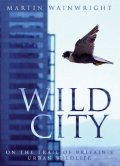
|
|
The Biodiversity in Glasgow (BIG) ProjectElizabeth Humphreys, Paul Kirkland and Dan Chamberlain
BTO Research Report 603
British Trust For Ornithology
2011
"The Biodiversity in Glasgow (BIG) project was set up as a collaboration between BTO Scotland, Butterfly Conservation Scotland and Glasgow City Council and ran from January 2007 to April 2009. The main aim of the project was to carry out the largest ever volunteer survey of the birds, butterflies and their associated habitats within the green spaces of the city. This information was then used to determine the key habitats for enhancing bird and butterfly diversity within green spaces."
|
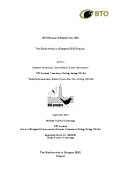 |
|
Urban EcologyEditor: Kevin J. Gaston
Cambridge University Press
2010
"This is the urban century in which, for the first time, the majority of people live in towns and cities. Understanding how people influence, and are influenced by, the 'green' component of these environments is therefore of enormous significance. Providing an overview of the essentials of urban ecology, the book begins by covering the vital background concepts of the urbanisation process and the effect that it can have on ecosystem functions and services. Later sections are devoted to examining how species respond to urbanisation, the many facets of human-ecology interactions, and the issues surrounding urban planning and the provision of urban green spaces. Drawing on examples from urban settlements around the world, it highlights the progress to date in this burgeoning field, as well as the challenges that lie ahead."
|
Buy from amazon.co.uk 
|
|
Crow Planet: Essential Wisdom from the Urban WildernessLyanda Lynn Haupt
Back Bay
2009
"There are more crows now than ever. Their abundance is both an indicator of ecological imbalance and a generous opportunity to connect with the animal world. Crow Planet reminds us that we do not need to head to faraway places to encounter 'nature'. Rather, even in the suburbs and cities where we live we are surrounded by wild life such as crows, and through observing them we can enhance our appreciation of the world's natural order. Crow Planet richly weaves Haupt's own 'crow stories' as well as scientific and scholarly research and the history and mythology of crows, culminating in a book that is sure to make readers see the world around them in a very different way."
|
Buy from amazon.co.uk 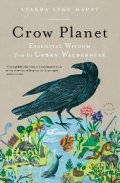
|
|
Superdove: How the Pigeon Took Manhattan ... and the WorldCourtney Humphries
Harper Collins
2008
"Why do we see pigeons as lowly urban pests and how did they become such common city dwellers? Courtney Humphries traces the natural history of the pigeon, recounting how these shy birds that once made their homes on the sparse cliffs of sea coasts came to dominate our urban public spaces. While detailing this evolution, Humphries introduces us to synanthropy: The concept that animals can become dependent on humans without ceasing to be wild; they can adapt to the cityscape as if it were a field or a forest."
|
Buy from amazon.co.uk 
|
|
Urban Ecology: An International Perspective on the Interaction Between Humans and NatureEditor: John M. Marzluff, Eric Shulenberger, Wilifried Endlicher, Marina Alberti, Gordon Bradley, Clare Ryan, Ute Simon, Craig ZumBrunnen
Springer Verlag
2008
"Urban Ecology is a rapidly growing field of academic and practical significance. Urban ecologists have published several conference proceedings and regularly contribute to the ecological, architectural, planning, and geography literature. However, important papers in the field that set the foundation for the discipline and illustrate modern approaches from a variety of perspectives and regions of the world have not been collected in a single, accessible book. Foundations of Urban Ecology does this by reprinting important European and American publications, filling gaps in the published literature with a few, targeted original works, and translating key works originally published in German. This edited volume will provide students and professionals with a rich background in all facets of urban ecology."
|
Buy from amazon.co.uk 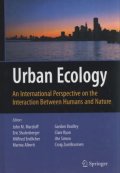
|
|
The Eastern Screech Owl: Life History, Ecology, and Behavior in the Suburbs and CountrysideF.R. Gehlbach
Texas A&M University Press
2nd edition
2008
"Based on a twenty-five-year study, biologist Frederick R. Gehlbach tells the life story of the eastern screech owl, focusing on case studies of suburban and rural study plots in Central Texas. This is the first thorough study of major life-history, behavioral, and ecological features of the species. Indeed, it is the first concurrent, comparative study of an urban and a rural population of any New World animal. Told in a personal voice, the story of these birds will interest all who have not lost touch with their ancestral world. However, Gehlbach has also included quantitative data and analysis of interest to ecologists, wildlife biologists, and ornithologists."
|
Buy from amazon.co.uk 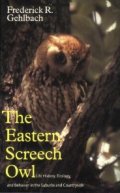
|
|
Field Guide to the Natural World of New York CityLeslie Day
Johns Hopkins University Press
2007
"There is a secret world within New York City, a universe of creatures great and small living side-by-side with the Big Apple's Homo sapiens. The five boroughs sit atop one of the most naturally rich sites in North America, directly under the Atlantic migratory flyway, at the mouth of a 300-mile-long river, and on three islands - Manhattan, Staten, and Long. New York just might be the most biologically diverse city in temperate America. Leslie Day, a New York City naturalist, reveals this amazing world in her "Field Guide to the Natural World of New York City". Combining the stunning paintings of Mark A. Klingler with a variety of photographs and maps, this book is both beautiful and informative. Conveniently divided into sections for animals, plants, mushrooms, and geology, this is a complete guide for the urban naturalist - from tips on identifying the city's flora and fauna to maps showing the nearest subway stop. Here is your personal guide to the real wild side of America's largest city."
|
Buy from amazon.co.uk 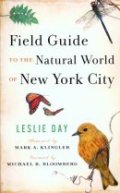
|
|
Where to Watch Birds in World CitiesPaul Milne
Christopher Helm
2006
"All birders enjoy the excitement of birding abroad. However, many overseas trips are for business or for family holidays, and birding opportunities may be frustratingly brief. This book is aimed at all birders who would like to make the most of their trips abroad, even when birding time is limited. Following the familiar Where to Watch Birds style, it covers top birding sites which are within easy travelling distance of 60 of the world's largest city centres. It includes detailed travel and access information as well as overviews of the sites' habitats, species likely to be seen, and advice on the best times to visit. Armed with this guide, a travelling birder will easily be able to plan an enjoyable few hours of birding, perhaps between meetings or connecting flights, even in an unfamiliar country."
|
Buy from amazon.co.uk 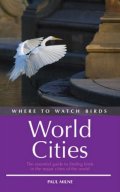
|
|
Birds in European CitiesEditor: John G. Kelcey and Goetz Rheinwald
Ginster Verlag
2005
"Birds in European Cities is the first book to describe any aspect of the natural history of man-made habitats across Europe or any other continent. The urban habitats present in the cities have arisen by a combination of their geographical and climatic position and their development over the last 1,000 years. Each chapter describes the historical development of the city, the birdlife that has been recorded in it from the beginning of the 20th Century, the birds found in each of the major habitats; and a section on where to watch birds. The chapters also consider the effects of planning and architectural and landscape design on birds. The implications of building restoration and landscape and management on the birdlife of the cities are also described. Many interesting facts emerge. For example, there is only one truly urban bird - the Feral Pigeon, which has evolved from the adaptation of and considerable genetic changes in the Rock Dove to become the only bird whose occurrence is restricted to urban areas. The overall species diversity and biomass of birds in the urban environment is higher than in the rural environment. In contrast, the abundance and diversity of species within a particular habitat is significantly lower in cities than in the countryside."
|
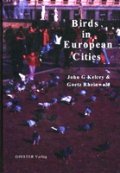 |
|
Nature in Fragments: The Legacy of SprawlEditor: Elizabeth A. Johnson and Michael W. Klemens
Columbia University Press
2005
"This new collection focuses on the impact of sprawl on biodiversity and the measures that can be taken to alleviate it. With contributions from biological and social scientists, environmentalists, conservationists, and land-use professionals, Nature in Fragments examines the genesis of sprawl, its effect on species, and the ways in which it alters natural communities, ecosystems, and natural processes. Issues discussed include the impact of sprawl on freshwater ecosystems, the economics of biodiversity in urbanizing landscapes, building public awareness of the impact of sprawl, conserving biodiversity through better-informed planning, and assessing the effectiveness of conservation efforts."
|
Buy from amazon.co.uk 
|
|
Wild City: A Guide to Nature in Urban Ontario, from Termites to CoyotesDoug Bennet and Tim Tiner
McClelland & Stewart
2003
"Wild City is full of fascinating natural histories of the most common plants and wild animals found in Ontario's cities, packed with a satisfying mix of little-known information, vital and amusing facts, trivia, and lore. It features 130 species found in urban habitats such as lawns and gardens, rivers, ravines, vacant lots, embankments, and buried streams. It describes how to make your garden or balcony more attractive to wildlife, and explains weather phenomena and the day and night sky. Species range from moths to coyotes, downy woodpeckers to dog-strangling vine, cockroaches to carp, and the geographic range is from Windsor to Ottawa."
|
Buy from amazon.co.uk 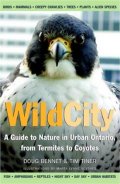
|
|
City Birding: True Tales of Birds and Birdwatching in Unexpected PlacesEditor: Mark Allison
Contributors: Kenn Kaufman, Clay Sutton, Marie Winn, Ann Zwinger, Paul A. Johnsgard, Kim Todd, John Nichols, Judith A. Toups, Mark S. Garland, Paul Kerlinger, Julie Zickefoose, Lawrence Kilham, Curtis Badger, Nikki Weinstein, James Gorman, Michael Harwood, Mary Durant
Stackpole Books
2003
"The waterways of New York-New Jersey, the Chesapeake Bay Bridge-Tunnel, the Metropolitan Museum of Art, the French Quarter of New Orleans -- all unlikely spots for bird-watching. For the careful observer, however, these urban locations and others like them can be settings for memorable birding experiences. In this unique book, some of the country's best-known birders observe birds in places where thriving bird life comes as a surprise. Funny, informative, and thought-provoking, the true stories collected here demonstrate the amazing adaptability of birds, which sometimes seem to thrive in almost any setting humans create: city parks, busy marinas, cemeteries, sewage lagoons. They also illustrate the vulnerability of the natural world in an increasingly man-made environment, and show how the excitement of bird-watching can exist in the most unexpected places."
|
Buy from amazon.co.uk 
|
|
Investigation into the causes of the decline of Starlings and House Sparrows in Great BritainHumphrey Q. P. Crick, Robert A. Robinson, Graham F. Appleton, Nigel A. Clark & Angela D. Rickard
BTO report 290
British Trust for Ornithology
2002
"The key aims were to: 1. Investigate the trends in breeding populations of Starlings and House Sparrows in Great Britain. 2. Examine the trends regionally and according to habitat, particularly in relation to urban, suburban and rural habitats. 3. Investigate variations in breeding success and recruitment, as well as winter and summer survival. 4. Investigate human influences, in particular an assessment of the scale and impact of control activity. 5. Identify likely causes of the declines in Starling and House Sparrow populations and place these within a whole population context
|
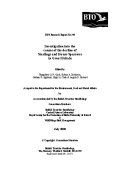
|
|
Avian Ecology and Conservation in an Urbanizing WorldEditor: John M. Marzluff, Reed Bowman and Roarke Donnelly
Kluwer Academic Publishers
2001
"The twenty-seven contributions authored by leaders in the fields of avian and urban ecology present a unique summary of current research on birds in settled environments ranging from wildlands to exurban, rural to urban. Ecologists, land managers, wildlife managers, evolutionary ecologists, urban planners, landscape architects, and conservation biologists will find our information useful because we address the conservation and evolutionary implications of urban life from an ecological and planning perspective. Graduate students in these fields also will find the volume to be a useful summary and synthesis of current research, extant literature, and prescriptions for future work. All interested in human-driven land-cover changes will benefit from a perusal of this book because we present high altitude photographs of each study area."
|
Buy from amazon.co.uk 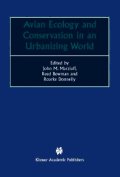
|
|
Wild Nights: The Nature of New York CityAnne Matthews
Flamingo
2001
"Though at first glance somewhat unlikely, it's a testament to the style and fizz of Matthews' writing that within pages of beginning her book on how the natural world is reclaiming the planet's megacities, focusing on New York, the reader is eating out of her palm like the tamest city sparrow…The book hums with refreshment and enlightenment at every turn and dances around its subject as gracefully and nimbly as a wild turkey (you don't think a turkey can be graceful? just read Wild Nights). Now, the book is not quite as terminally parochial as I've made out (and, anyway, anyone who has ever fallen for Manhattan is going to be thrilled by this revelation of another nightlife in that pulsating city) – after all, the dynamics of change within the great metropoli (London, Shanghai, Calcutta, Tokyo, Rio, LA, Mexico City, Lagos, Kuala Lumpur etc) are very similar, as are the tactics of the rodents, falcons, bears, birds, insects and amphibians who are finding new ways to thrive in each of these places. And it's worth stressing that the book is not non-human at all: the key players are the individuals who devote their lives to monitoring, intercepting and ameliorating the lives of their feathered, furry or fanged friends; and then there's the silent majority of humans who think too little, if at all, at the massive changes their species is inflicting on their immediate environment. It's a powerful book that becomes cumulatively political in the true sense because at no stage does it strike a single political pose or shoot a single politcal arrow. It's a liberating and mind-cleansing reading experience."
|
Buy from amazon.co.uk 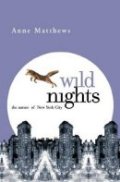
|
|
Site Action Plan for Black Redstarts Phoenicurus ochruros in the Deptford Creek Area, Greenwich, LondonS.J. Holloway & D.E. Glue
BTO Report 212
British Trust For Ornithology
1999
"This study, commissioned by Ove Arup Environmental, provides a site action plan for nesting Black Redstarts at Greenwich Reach East, London, with the aim of maintaining the population after site redevelopment. The UK status and the breeding biology of the Black Redstart are reviewed A visit was made in October 1998 to the proposed redevelopment site and also to several sites in the immediate vicinity where Black Redstarts are currently known to breed. Suggested mitigation measures include the provision of artificial nestboxes, the maintenance of existing nest sites wherever possible, and the retention and maintenance of as many of the existing foraging areas as possible. Potential new foraging areas should be created, e.g. by covering flat roofs with gravel.
|
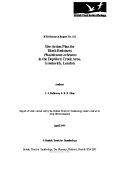 |
|
Site Action Plan for Black Redstarts Phoenicurus ochruros in the Deptford Creek AreaK. Evans
BTO Report 228
British Trust For Ornithology
1997
"The area around Deptford Power Station is in the process of being redeveloped. In late June 1997 a local ornithologist observed Black Redstarts in the area. This species is a rare breeding bird in Britain and is fully protected by legislation through its listing in Schedule 1 of the Wildlife and Countryside Act (1981). The site manager was informed and demolition work was halted. Detailed ornithological survey work reveal ed the presence of two females and one male. Later it was established that the nest was not located in the buildings that were due for demolition. Development work recommenced and at least four young fledged successfully. A wide range of further development work is planned for the site which could adversely affect the Black Redstarts through disturbance and habitat change. This Site Action Plan provides information on the status and biology of Black Redstarts, the impact of the site development as planned and suggests methods for ensuring that the site remains suitable for Black Redstarts.
|
 |
|
Raptors in Human Landscapes: Adaptations to Built and Cultivated EnvironmentsEditors: David M Bird, Daniel E Varland and Juan J Negro
Academic Press
1996
"This collection of papers considers the ways in which raptors have adapted to man-made landscapes and structures. It covers the impact of human activity, conditions associated with urban, cultivated and industrial landscapes, and the provision of artificial nest sites and platforms. Cases are drawn from around the world, including North and South America, Europe, Africa and elsewhere; and a broad range of species groups are included, such as falcons, accipiters, eagles, and kites."
|
Buy from amazon.co.uk 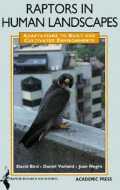
|
|
Patterns of Bird Communities in Urban EnvironmentsJ. Jokimaki
Arctic Centre Report 16
University of Lapland
1996
|
 |
|
City Peregrines: A Ten-Year Saga of New York City FalconsSaul Frank
Hancock House Publishers
1994
"This is more than a story of how the world's most spectacular aerial predator invaded and took over New York City. It offers more than an expansion of our understanding of nature's most ubiquitous bird. It is the personal story of how a retired business manager, Saul Frank, hiked, biked, and climbed around New York City pursuing peregrines, often at great risk to himself, but always gaining enjoyment for himself and his wife. It is the story of how our greater understanding of the world's most successful predator came from an amateur bird watcher."
|
Buy from amazon.co.uk 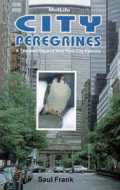
|
|
Birds Of Man's WorldDerek Goodwin
British Museum (Natural History) / Cornell University Press
1978
|
Buy 2010 ed. from amazon.co.uk 
|
|
The Unofficial CountrysideRichard Mabey
Harper Collins
1973
"During the early 1970s Richard Mabey set about mapping his unofficial countryside. He walked crumbling city docks and World War II bomb-sites, he navigated inner city canals and car parks, he returned again and again to sewage works, reservoirs, gravel pits, rubbish tips. What he discovered runs deeper than a natural history of our suburbs and cities. The Unofficial Countryside prescribes another way of seeing, another way of experiencing nature in our daily lives. A bank of wildflowers glimpsed from the window of a commuter train. Kestrels shimmering above waste grounds and town parks. Enchanter's nightshade growing through pavement cracks. Fox cubs playing on the scrubby fringe of a motorway embankment. It is easy to forget the abundance of wildlife thriving so near our routines and our homes, yet there is scarcely a nook in our urban landscapes incapable of supporting life. It is an inspiration to find this abundance, to discover how plants, birds, mammals and insects flourish against the odds in the most obscure and surprising places."
|
Buy 2010 ed. from amazon.co.uk 
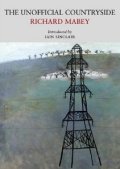
|
|
London's Natural HistoryR.S.R. Fitter
Collins
The New Naturalist 3
1945
"Richard Fitter provided the first comprehensive history of a great human community in terms of the animals and plants it has displaced, changed, moved and removed, introduced, conserved, lost or forgotten. In selecting London as an area for such study Mr.Fitter, himself a Londoner, took the world's largest aggregation of human beings living in a single community and in many ways the most interesting perhaps of all regions of the British Isles, and showed how the spread of man's activities affected the plants and animals in them, destroying some, creating others."
|
Buy facsimile reprint from amazon.co.uk 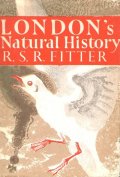
|
|